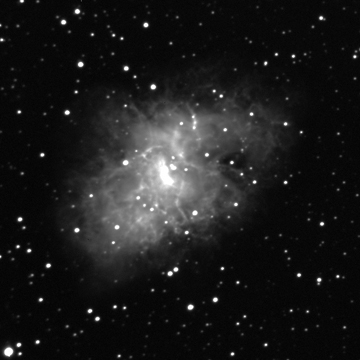This afternoon I’m still badly chilled from last night’s observing. So this is a follow-up on lessons learned.
Even though SBIG considers -5°C to be a standard and adequate camera temperature, all of the work done last night at -15°C was noisy. The noise interferes with astrometry and was super evident on the longer exposures. Toward the end of the night I’d switched over to the Horsehead, and although I’d cooled the camera to -30 for this the reductions were accidently chosen for -15, and the individual frames were ultra noisy. Deep stacking seemed to fix the problem, but one wonders what clean images would have produced.
A full set of -30°C darks was run today: 1, 2, 3, 5, 10 & 15 minutes
Part of the problem has been the CCDSoft limitation on identifying reductions. Only 9 or 10 characters appear even though the ID is more comprehensive. For example, a reduction title such as 3min -15C 2X2 uses 13 key entries and only shows up as 3min -15C and I’ve no idea as to the binning when there are 15 reductions in the list. So the new ID format is now 10m 1X -30 Only 10 spaces are used and they seem to fit OK.
Started out planning for tonight with several asteroids, but after last night’s exposure not feeling up to that kind of effort. However, it only takes a few minutes to open the dome and be operational, and it’d be interesting to see how correct -30C reductions work on a DSO.
M1 (the Crab Nebula) is well positioned and well sized for the 21’ X 15’ FOV. Operating at 1X1 binning, -30°C cooling, 2 Hz guiding. Experimenting with exposures, 5 minutes blows out the center of the Crab but shows exterior gas while 3 minutes shows lovely filaments but is a bit dim and doesn’t show the full body of the nebula. But in playing with the CCDSoft presentation there’s a histogram setting that produces the best of both worlds at the 5 minute setting. (It subsequently turns out that I couldn’t locate this particular adjustment in PS. Closest thing is LEVELS but one can’t increase the white setting, only decrease it.)
There’s a HUGE improvement in single frame noise running 5 minutes, 1X1, -30C, 2 Hz. 23 frames taken between 20:10 and 22:20. It’s 21° out but copying the Astro Geek’s “lazy astronomy” approach of observing indoors via remote there’s little effort except for stepping out every 25 minutes to nudge the dome around a bit.

It lacks the beautiful colors but I do hate the hours of post processing associated with LGBR imaging. Without filters and with the highly sensitive blooming type pixels the stars aren’t pinpoint. But this carefully calibrated imaging setup is optimized for astrometry. And with its great sensitivity I still get a big kick out of checking out stuff that’s tough or impossible for visual observation.
Conclusions and lessons learned:
-15C cooling is a convenient 3-season temperature. But given astrometry's short exposure constraint, I've been struggling with asteroids dimmer than 19.5 magnitude. Cooling to -30C seems to result in a huge reduction in noise. The camera can cool to -30C if ambient is lower than 35 or 40°F, and in addition to improved transparency lower noise at lower temperature may explain why the setup is more effective in the winter. Thought to run -15 year round for convenience but will continue with -30 as a winter setting.
